|
All this comes to an abrupt end in 1924. Against the wishes of his mother,
who would never really like her son’s art, Wehrlin curtails his
studies and goes to take up residence in the Montparnasse quarter of
Paris. In order to improve his technique, he enrols in various academies
(Jullian, Ranson, Grande Chaumière), where he becomes a pupil
of André Lhote). It was at this time that he completed a number
of nude studies and portraits, the « facet » approach used
being somewhat reminiscent of Cubism, showing the influence of Lhote,
who was an artist very much influenced by this end of century movement.
Wehrlin
paints a numbrt of self portraits, faces and busts, but also full length
portraits. »It is often difficult to recognise him in these self
portraits. Wehrlin makes no attempt to establish any resemblance. They
are portraits like any others, not Narcissic pictures and detached self
analytical studies, devoid of any self complacency. They even sometimes
appear to be distinctly satirical in their inspiration, remaining so
close to the original sketch that they look as if they are unfinished,
almost as if the artist was afraid of going any further and getting
too close to his own existence. » (R. Koella)
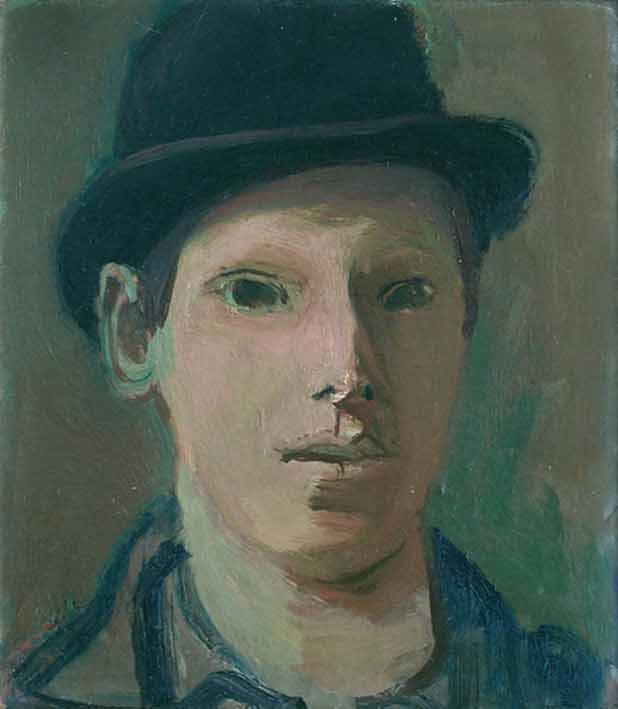 Self
portrait in a bowler hat ca.1925
Self
portrait in a bowler hat ca.1925
|
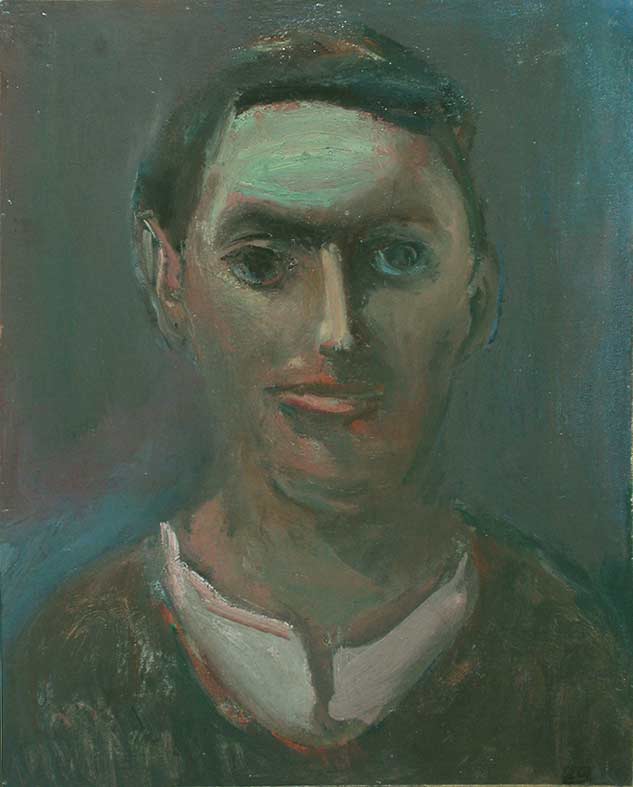 Self
portrait ca. 1925
Self
portrait ca. 1925
Oil on pastelboard - 41 x 33 |
The
rich cultural environment in Paris at this time forge his taste and
his style. The classical and then modern sections of the Louvre fascinate
him. Thanks to this additional cultural experience, his contacts with
Kirchner between 1925 and 1928 become richer and richer, especially
from a graphic point of view, where Kirchner’s influence and his
tormented Davos universe inspire Wehrlin to embark on a prolific
amount of work distinguished by its dire Expressionist violence.
But towards the end of the twenties his mind begins to become torn between
German Expressionism and his new life in Paris, where his Germanic rigour
is attenuated by the surrounding Latin environment. As opposed to Expressionism,
it is more form than expression which can be found in the works of Parisian
artists, the two « locomotives » among whom being : Picasso
and Matisse.
| From Matisse, whom he admires,
« Wehrlin learns that a painting is primarily a canvas which
the artist covers with colours, in accordance with strict rules.
Next, that painting essentially means creating a form and that each
genuine creation is the product of sensitivity and reason. He also
learned to adopt his compositions to the format, by means of wide
strata, one above the other and with heavy accent on horizontal
and vertical lines (...) but most of all, he learned to use colour,
to embolden it, to restrain it. With delicate refinement, he will
juxtapose a bright red and a dark black, or offset a light blue
or even a lemon yellow with a creamy white or a glistening grey.
At the same time, he lends accent to the material aspect of paint
by spreading it in compact, cracked layers (...) Wehrlin is essentially
a colourist. ‘R.K.) |
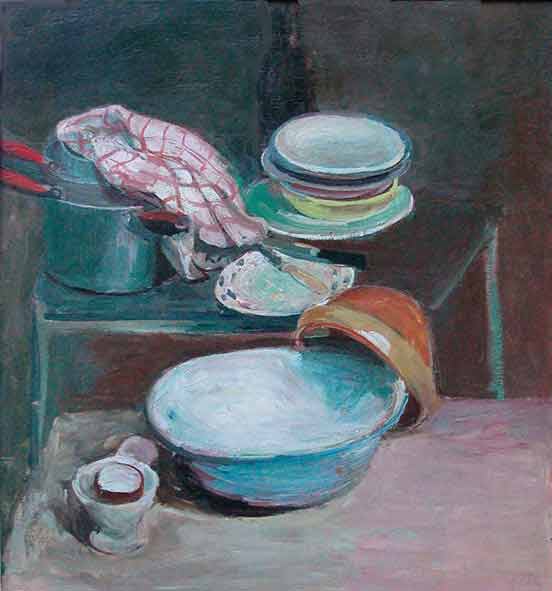 The
kitchen of "rue Vercingetorix" ca.1926
The
kitchen of "rue Vercingetorix" ca.1926
oil on wood |
The
essential thing for him is to not to obtain aesthetic harmony but to
use colour to obtain as much expressiveness as posible. According to
R. Koella Matisse has as much influence on Wehrlin as Kirchner. It is
maybe as a result of these two culturally and pictorially opposed influences
that a Wehrlin « style » emerges in 1928. From Kirchner,
he gets the spontaneity of the lines and the force of colours ; from
Matisse, « the art of giving relief to a painting without disavowing
its fundamental flatness. »
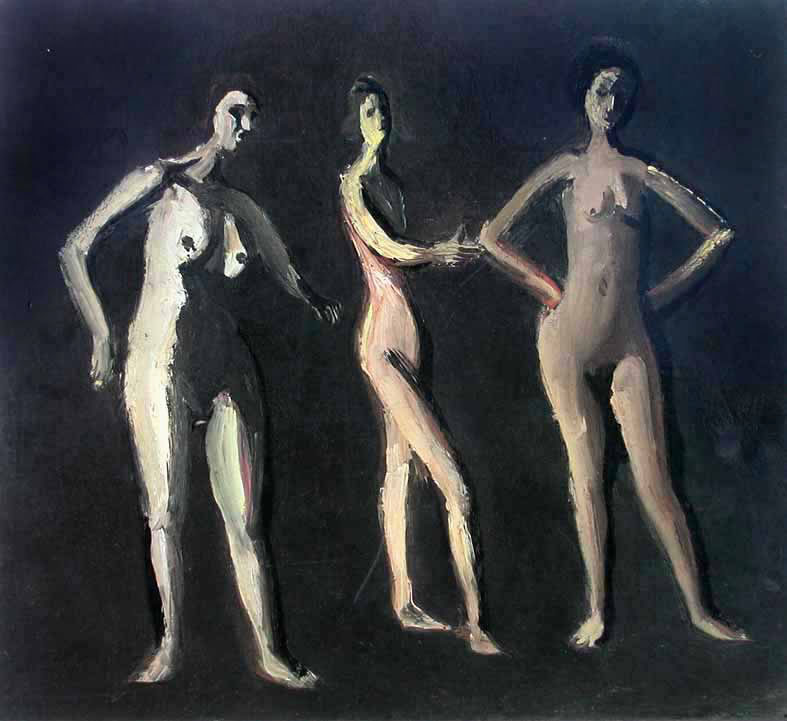 The
Three Graces 1930
The
Three Graces 1930
Oil on pastelboard - 36.5 x 40 |
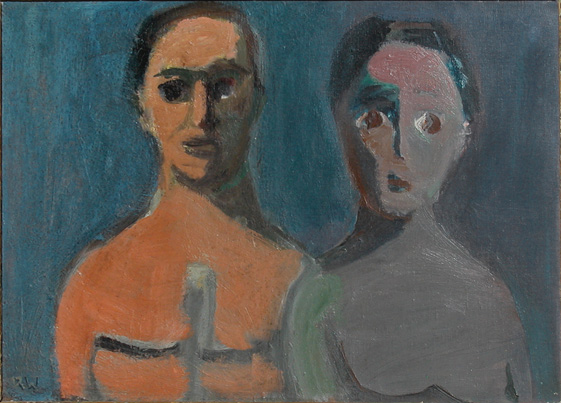 The
couple c. 1930
The
couple c. 1930
Oil on canvas - 43 x 60 |
|